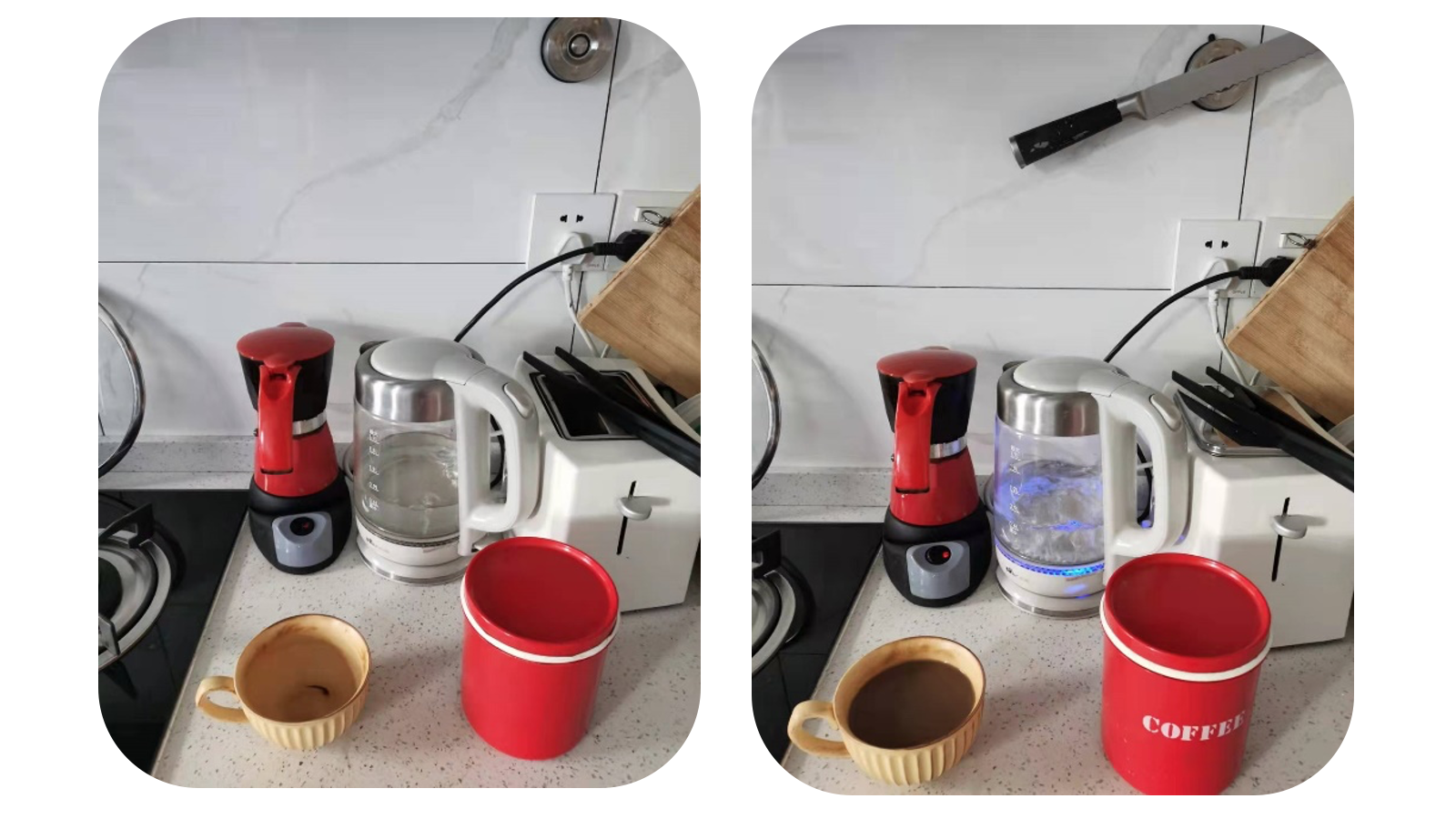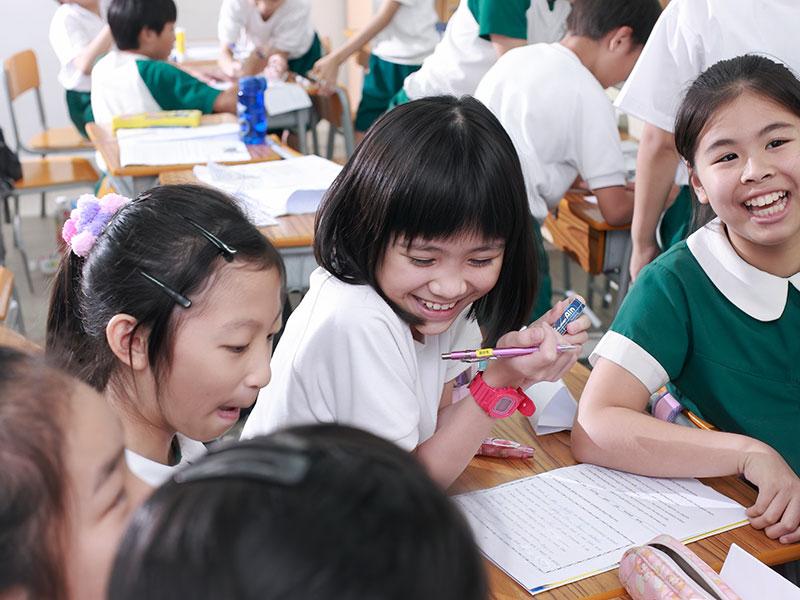8th August 2022
It’s fairly easy to get students to talk. It’s a little harder to get students to talk to each other. Hardest of all is getting students to listen to each other.
Teachers often ask students to “Discuss what you did on the weekend” or “Speak to your partner about your favorite foods”. Instructions like these work with motivated students. But if students are less driven, they might say a couple of things, then lapse into silence. And no wonder! They don’t have a reason to speak (or listen).
Finding a reason to speak (and listen!)
Information gap activities are one way to encourage students to speak (and listen) to each other. Successful information gaps have four components: a gap, roles, information, and a product (spelling GRIP). You need each of these for an information gap to be successful. Let’s look at each.
- Gap. A gap allows some of the class to see something which the rest of the class can’t. It could be a map, a short text, or a picture or something else. If there’s no gap and all students can see the same information, then there’s no reason for students to listen to each other.
- Roles. There are two main roles in communication: senders and receivers. Some information gap activities have two distinct roles (like a running dictation), where one student communicates and the other records the information. Other information gap activities require both students to send and receive information (like a survey). Without roles, students might speak, but they’re unlikely to listen.
- Information. This is what students communicate to each other. For young learners it might be information about how to color a picture. For adults it might be the missing words from a reading passage. Without information, there’s nothing to communicate.
- Product. This is how the students record the information after it has been communicated. Students can use the product to check that their partner understood them. If I told my partner “The cow is purple” and they colored it green, I know they misunderstood me. The product also makes the students accountable. Teachers can check their students successfully communicated with each other. Most importantly, a product gives students motivation to communicate meaning.
Let’s look at an example of how to put this into practice.
Example: Spot the difference
In spot the difference, two students look at two similar pictures, with a few differences (example below). The students take turns describing their images to each other, listening for differences. When the learners find a difference, they circle it or write what the difference is. After the activity, the teacher checks which differences the learners found.

- Gap. Pairs of students sit opposite each other, holding their pictures up. This stops students from looking at each other’s picture and seeing the differences (rather than describing them). You could also ask your students to sit back-to-back to make cheating harder.
- Information. The information is the two pictures. You can change the pictures depending on the topic. (The image below was made for a unit on things in the kitchen).
- Roles. Usually in spot the differences, both students act as senders and receivers (by speaking and listening). But this activity can be adapted for lower levels. The teacher could take on the speaker role, describing one picture. The learners could take on the listener role, circling any differences between what the teacher describes and what they see in their picture.
- Product. This is the list of differences that students either circle or write. Students can check how successful they were by noting how many differences they spotted.
If you did a spot the difference activity with your students and it didn’t work, use GRIP to figure out what went wrong (and what to change for next time). If students didn’t talk perhaps:
- there was no gap. Maybe your students were able to see each other’s pictures.
- some of the students weren’t ready to speak yet. In which case, next time take on the communicator role yourself.
- the information (i.e. the differences) was too challenging for the students to describe. Try simpler, less subtle differences (or pre-teach vocabulary needed to describe the differences).
- the learners weren’t sure what to do with the differences they found. Try to model circling (or listing) the differences first.
Let’s look at how you can use the GRIP framework to create your own information gap activities by altering the gap, the roles, the information or the product.
Gaps
Gaps are ways to hide information from some students while showing it to others. You can create gaps by:
- hiding information around the classroom or in the school. You might put a text outside your classroom or on a wall far away from the students. You can then allow and prevent different students from going outside the classroom to look at the information.
- changing your classroom seating to create a gap. Ask half your students to turn around in their chairs so they face the back (hiding information from them). The other half of the class can then view information on a board or screen at the front of the room.
- putting it in your students’ heads. One student could think of a movie and describe it to their classmates. The classmates must guess which movie is being described. The correct answer is ‘hidden’ in the head of a student.
- sticking it on the students’ backs. Print the names of famous people and stick these to students’ backs. Everyone else in the class can see the information apart from the student who is trying to guess it. Students walk round the classroom asking questions about themselves (“Am I male or female?” “Which country am I from?” etc.) before guessing the name of ‘their’ famous person.
- (if you are teaching online) hiding information behind your (and your students’) cameras. Describe something you can see in your room and ask the class to guess what you’re looking at.
Roles
There are two main roles in an information gap task. These are:
- the sender. This is the person with access to the information who must communicate it (probably by speaking).
- the receiver. This is the person who tries to receive the information from the communicator and records it. (We’ll look at how to record this in the Product section.)
These roles can be filled by people. This leads to different permutations like one-way tasks, two-way tasks, teacher to student (listening) tasks or student to teacher tasks.
- In one-way tasks, some of the students are senders and the others are receivers. Like in a running dictation, where the sender reads the information and passes it to the receiver. The receiver writes the answers. In one-way tasks the sender role is (usually) more challenging than the receiver role.
- In two-way tasks, students both send and receive information. This could be personal information, like in a survey. Or it could be an information from the teacher or a coursebook. For example, when students have two different halves of the same picture and need to communicate to answer questions about it.
- In teacher to student (listening) tasks, teachers have the information and act as the sender. The students act as “receivers”. This is ideal for younger students who might not be able to speak or work well with others yet.
- In student to teacher tasks, students have information and need to pass it on to the teacher. The teacher acts as a scribe or artist for the class. The students could tell the teacher what to draw on the whiteboard. By looking at what the teacher draws, the students can check if they have been understood (or not).
Information
Whatever the information is, it’s crucial that this information is unknown to the students at the beginning of the task. If the learners already know (or can guess the information) there will be less motivation for the students to communicate with each other.
The information you give your students will depend on factors like:
- what language (grammar, vocabulary, etc.) you are teaching. For example, if you want students to practice the names of farm animals, farm animals should be part the information in the activity.
- what information your students are able to process (or interested in). Don’t use written texts with younger students who can’t read yet. Avoid miming with older students who might find this childish.
- what skills you want students to practice. If you want students to practice reading in class, use a written text instead of a drawing.
- what product you will use for the task. If the information and the product are in the same form, students need to convey less meaning than if they are in different forms. If students need to copy a list of words in a running dictation, students may focus on the spelling, not meaning. If instead students need to write a list of objects they can see in a picture, students must pay attention to meaning.
The ‘information’ in an information gap can be:
- pictures. You could show your class ten pictures, then ask some students to describe a picture, while others guess which picture is being described. Younger students can do describe and color activities. In describe and color activities, one student looks at a color picture and describes the colors of objects in the picture. Their partner listens to the description and colors in a black and white version of the same picture.
- written texts. Give half of your students a text with some words missing. These students must find the missing words by talking to a partner with a similar text, with different missing words. Texts can also be used to ask students to follow instructions; like paint by numbers or instructions to a game.
- information about the students. Students can find someone in the class with certain experiences or abilities, like in find someone who. Surveys use student information as the basis of an information gap. Students could ask their classmates’ opinions about a topic and note these. For low level students, this can be as simple as “Do you like mushrooms?” For higher level students, explore more complex issues, like “Should students have to wear school uniforms? Why?"
- audio. Play two different audio (or video) clips in two different rooms (e.g. your classroom and the classroom next door). Students could come together after listening and compare what they heard.
- emotions. If your students perform a dialogue or role play in front of the class, ask them to include a ‘mystery emotion’. While they perform the dialogue, other learners need to guess what the emotion is. At higher levels, students can add context to a dialogue and act it out for the class. The audience who must guess the relationship between the speakers in the dialogue. This encourages learners to go beyond the literal meaning of language.
Product
A product is what students do with the information they receive from listening to their partner. Students can be asked to:
- draw information. In listen and draw, the teacher (or a partner) describes a picture. The listeners must draw what they hear. In a survey with students who can’t write, ask students to record information by drawing pictures of what their classmates said they liked or disliked.
- move things. To practice prepositions, some students can read instructions about what items to put in or take out of their pencil cases. Their partner listens and moves their stationary to match the instructions.
- write information. In spot the difference, higher level learners could write a list of differences between the two pictures (instead of just circling these).
- draw a diagram. Diagrams are a useful way of organizing writing into something more than a list. Students could use a Venn Diagram to record information from talking to a partner about their shared and non-shared hobbies, habits or interests.
Using the framework
Use this framework to create your own information gaps, regardless of your context. Share the information gaps you create in the comments section below!
Want to create quality teaching materials?
Take the Trinity CertTESOL qualification with English for Asia.



